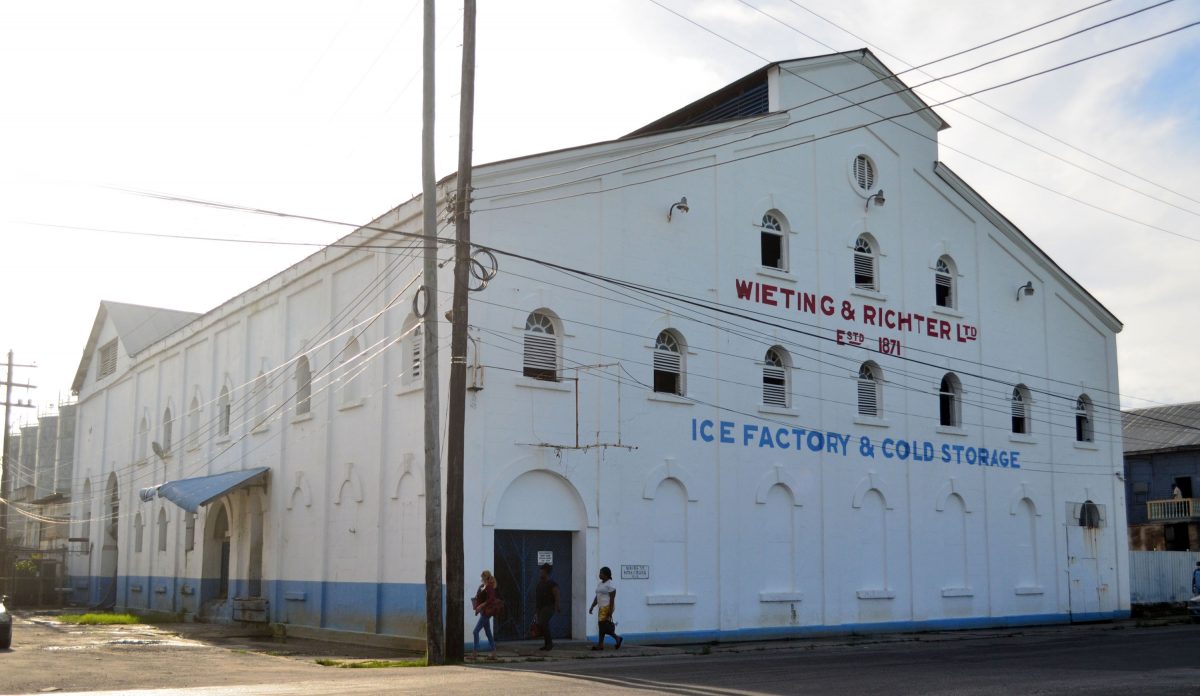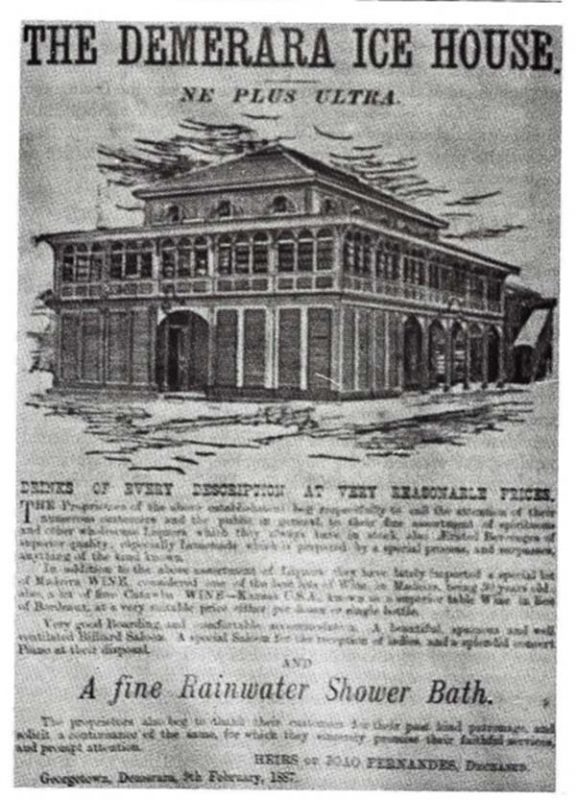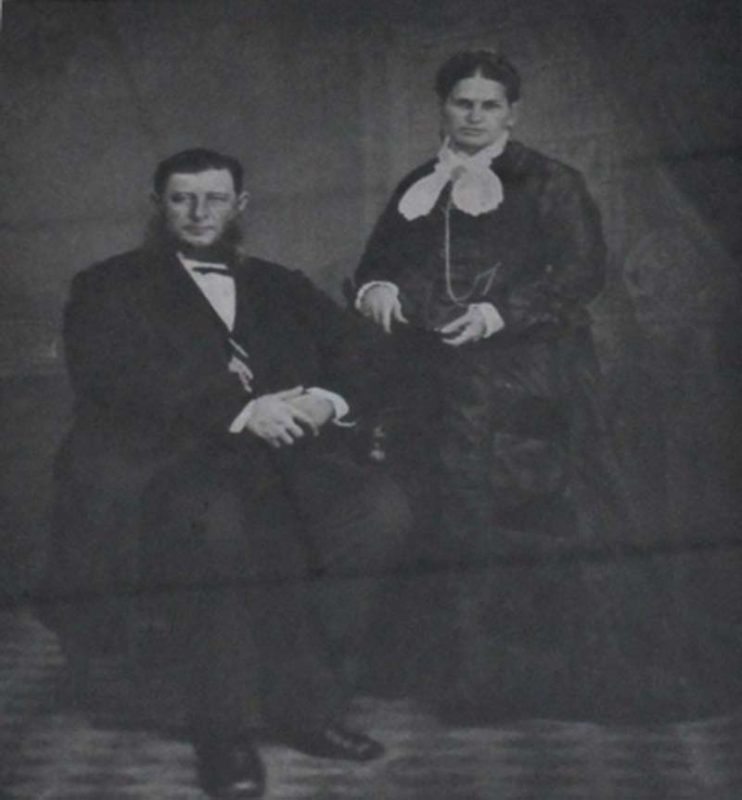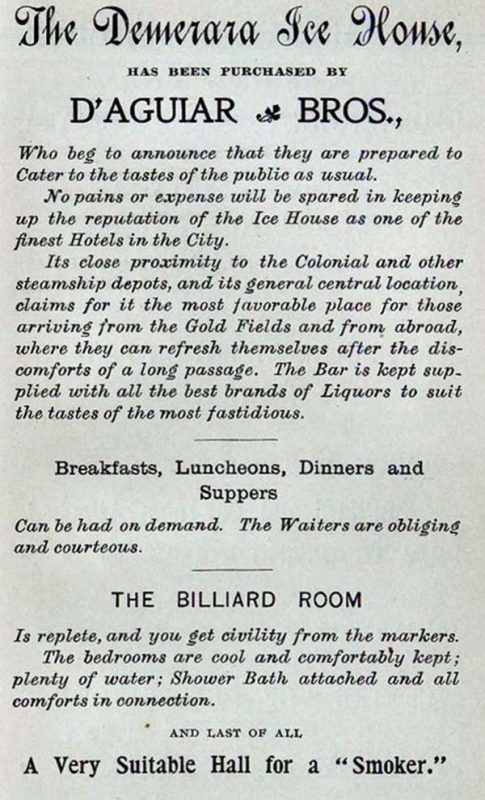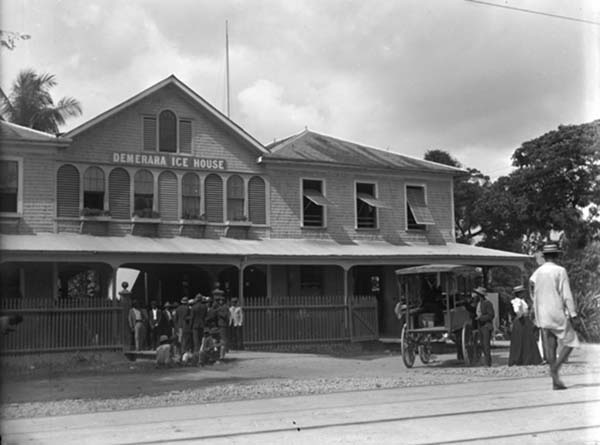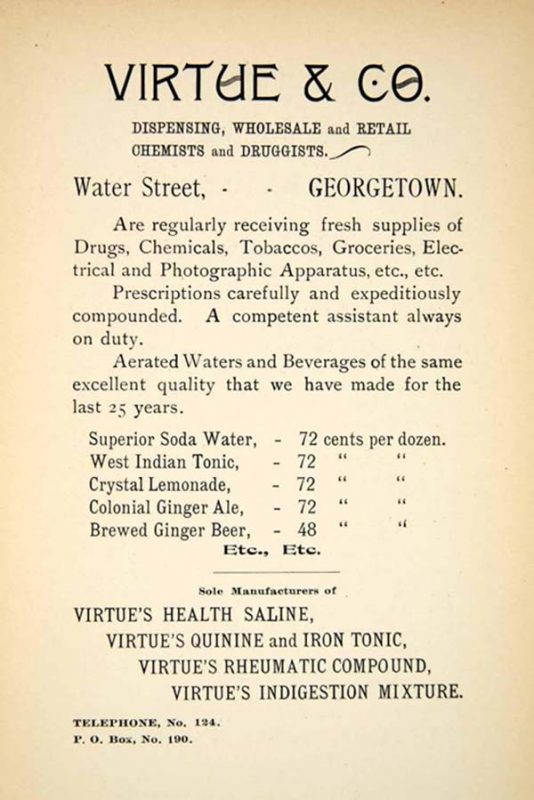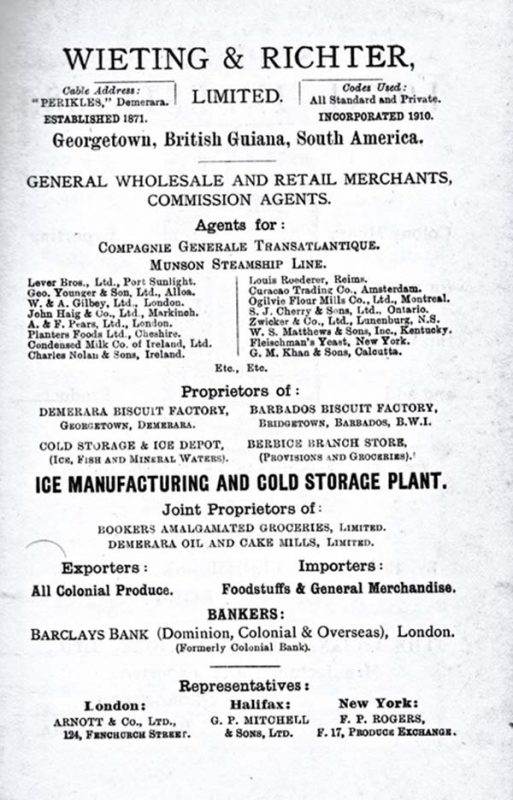One of the consequences of the increased attention to British Guiana as a place to “try one’s luck” was a shortage of hotel and recreational facilities in Georgetown. The Demerara Ice House was opened in 1846 in response to this demand. This building at the corner of Brickdam and Water Street is said to have been designed by Maltese architect Caesar Castellani, who is also credited with the designs of many iconic local structures, including the “towers of the Brick Dam Police Station,” the Palms, and Castellani House, Guyana’s National Gallery of Art.
The Demerara Ice House was so named because of its trade in imported ice. In 1896, the building was sold to “José Jnr., Manoel, Francisco, and John,” the four sons of José Gomes D’Aguiar, for $50,000. At that time, the building contained a hotel, liquor bars, and a soft drink plant.
José Gomes D’Aguiar Snr. migrated to British Guiana in 1842 from Madeira to “try his luck.” According to Sister Mary Noel Menezes, the preeminent scholar on the Portuguese experience in British Guiana, he started a “small provision business at Plantation M’ontrose and subsequently he traded at Plaisance.” By 1885, his business had included a “chain of liquor stores, a cocoa and chocolate factory, and a schooner shipping agency.” When he died in 1893, he was considered one of the wealthiest men in British Guiana. He left a fortune of about $400,000 (approximately G$37 billion in 2020).
The building at the corner of Brickdam and Water Street was situated on Crown Land, i.e., it was owned by the Government of British Guiana. It was not until 1929 that the company was able to buy the land from the government. That same year, Dr. J. G. D’Aguiar, Jnr., became the sole owner following the deaths of his three brothers. The partnership was replaced by D’Aguiar Brothers Limited. In 1934, his son Peter Stanislaus became the managing director. Under his leadership, D’Aguiar Brothers Ltd. became the most influential sweet drink company in the nation’s history. We will return to him and his role in the company’s growth and influence on Guyana’s economic, social, and political life later.
In 1914, the U.S. Department of Commerce’s Trade Directory for South America listed 10 sweet drink manufacturers in British Guiana. They were all located in Georgetown. On the list were the Demerara Ice House; Booker Brothers McConnel and Co.; Chapman’s Ltd.; Cold Storage and Ice Depot; Jasmin & Gomes; Macquarrie & Co.; Niagara Soda Water Factory; Royal Crown Soda Factory; Smith Bros. & Co. Ltd.; and Virtue & Co. Most of these bottlers were located on Water Street, the main business artery in Georgetown in the early 20th century.
All of these manufacturers were dependent on international sources, especially those in the United Kingdom and the United States, for key inputs, such as bottles, syrups, spices, aerating and bottling machinery, spare parts, and, for a period, wooden packing crates. The Cold Storage & Ice Depot (Ice Factory and Cold Storage), which was owned by Wieting and Richter, would subsequently become a major player in Guyana’s aerated beverage industry during most of the 20th century.
Like José Gomes D’Aguiar, Carl Wieting and Gustav Henri Richter, the founders of Wieting & Richter Ltd., were also in British Guiana to “try their luck.” They did not come from Portugal. They came from Prussia. In its early advertising, Wieting and Richter were described as “General Wholesale and Retail Merchants [and] Commission Agents.” The company was established in 1871 and incorporated in 1910. By 1922, one of its subsidiaries was the Cold Storage & Ice Depot, which was identified in contemporaneous newspaper advertisements as “Aerated Water Manufacturers.” In addition to manufacturing aerated water, the company manufactured ice and provided storage for perishable goods, such as imported meat and vegetables.
A discussion of Wieting and Richter’s aerated beverage line would be incomplete without some knowledge of the company’s founders. In the next installment, we will deepen our exploration of the company’s role in Guyana’s sweet drink story.
REFERENCES
Banks DIH. “Our History.” Available online at: https://www.banksdih.com/?q=about-us/history
Menezes, M. Scenes from the History of the Portuguese in Guyana. Georgetown, Guyana: Guyana Commemoration Commission, 1986.
Allicock, D. “The Ice Trade of British Guiana.” Available online at: https://guyaneseonline.files.wordpress.com/2013/05/the-ice-trade-of-british-guiana1.pdf
United States Department of Commerce. Miscellaneous Series No. 13. Trade Directory for South America. Washington D.C.: Government Printing Office, 1914, p. 334. Available online at: https://books.google.com/books?id=15Z6f70AurkC&pg=PA334&lpg=PA334&dq=Demerara+Ice+House&source=bl&ots=TfQFZMnSrA&sig=Cr4DKYnKHMqrI9VEF1gKjBdv22M&hl=en&sa=X&ved=0ahUKEwjH7qmm6q3aAhViyoMKHQUABPI4FBDoAQgmMAA#v=onepage&q=Demerara%20Ice%20House&f=false
